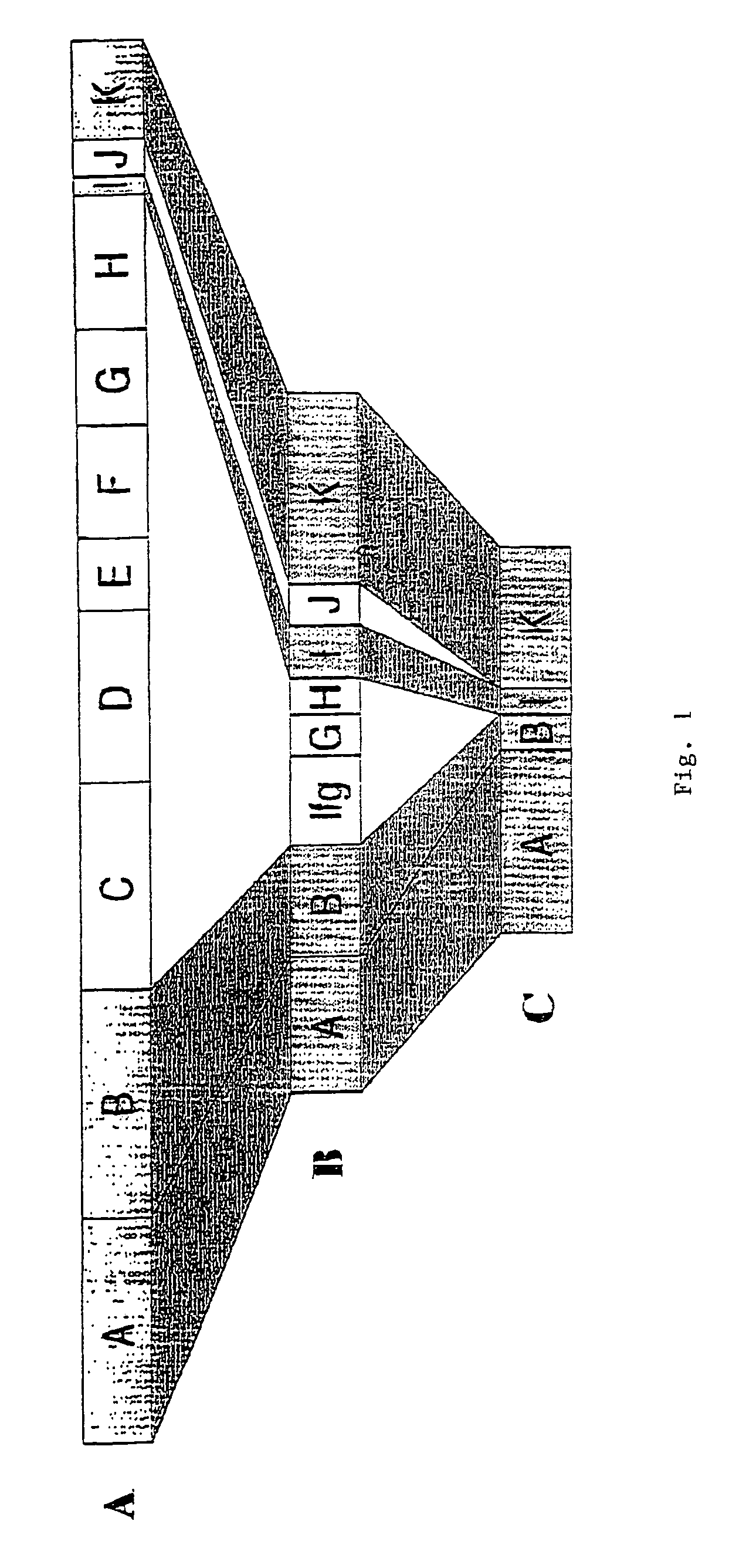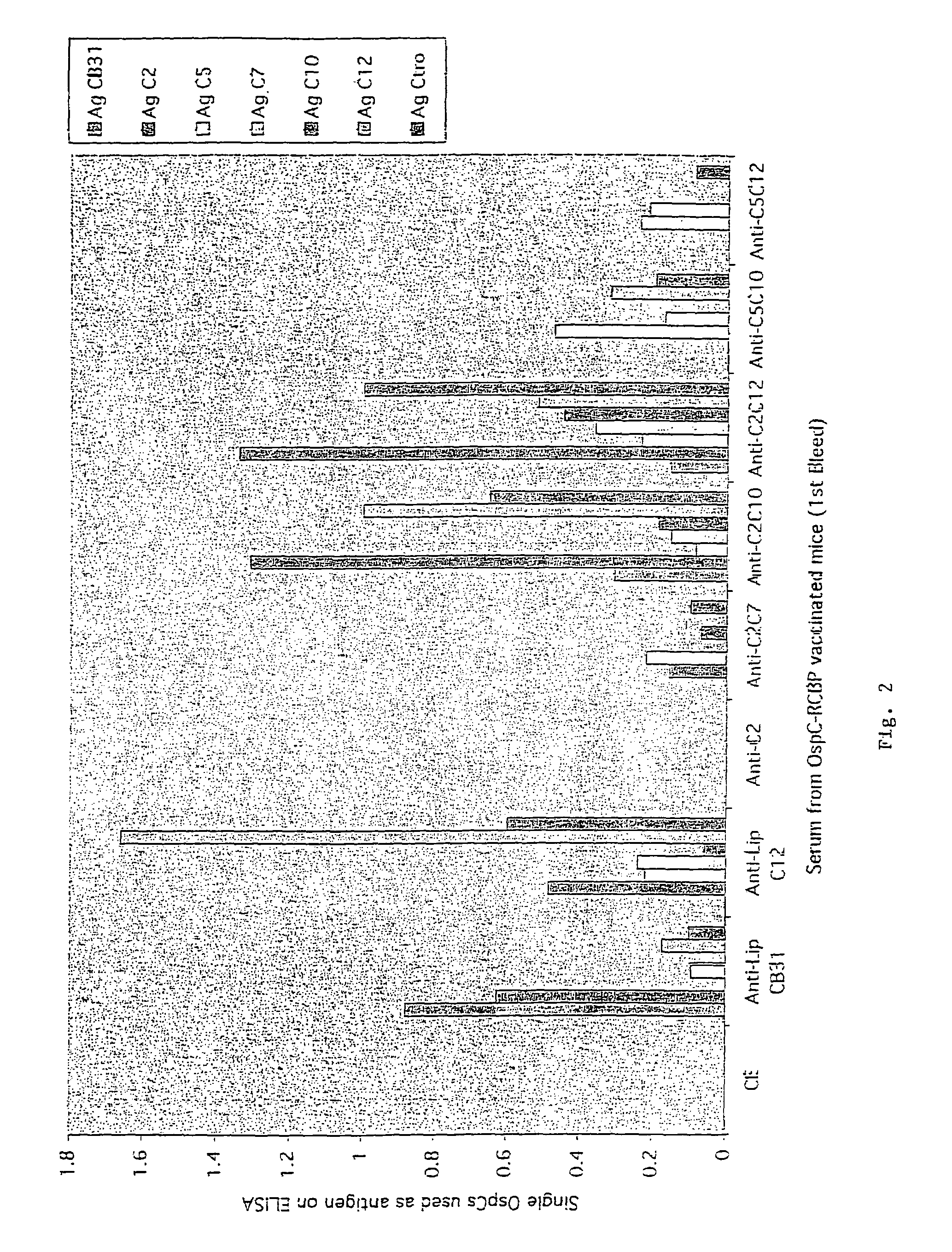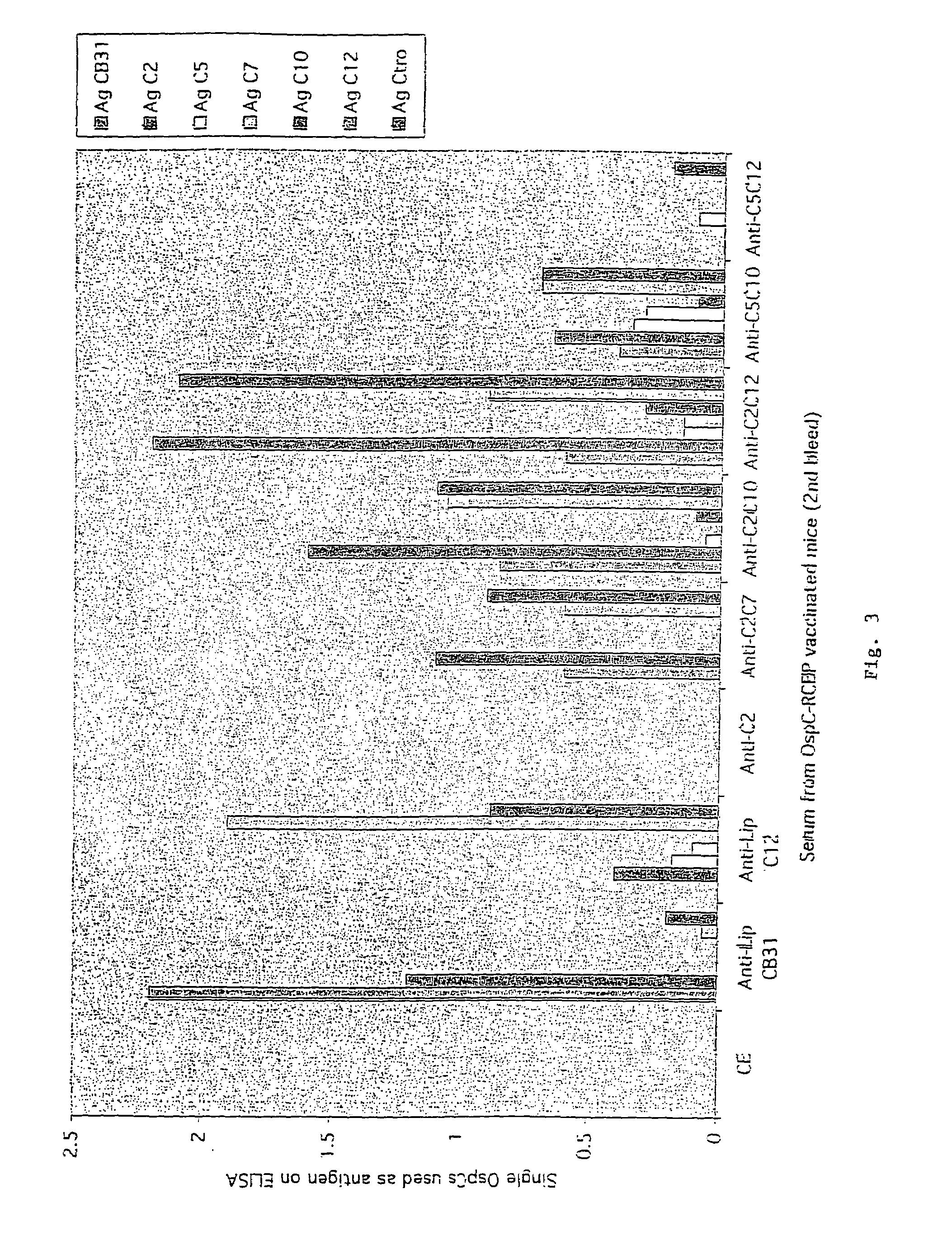Groups of barrelia burgdorferi and borrelia afzelii that cause lyme disease in humans
a technology of lyme disease and barrelia burgdorferi, which is applied in the field of barrelia burgdorferi /i>and i>borrelia afzelii /i>that cause lyme disease in humans, can solve the problems of ineffective treatment with antibiotics, often delayed treatment, and inability to cure infections, etc., and achieves simple purification, improved protein yield, and improved production methods
- Summary
- Abstract
- Description
- Claims
- Application Information
AI Technical Summary
Benefits of technology
Problems solved by technology
Method used
Image
Examples
example 1
Techniques
Borrelia Strains
[0066]One hundred and forty B. burgdorferi strains were isolated from primary erythema migrans (EM) lesions, blood or cerebrospinal fluid (CSF) of patients seen at the Lyme Disease Center at Stony Brook, New York, Lyme Disease Diagnostic Center at New York Medical College, Valhalla, New York or the private practices of the two collaborating physicians on the eastern end of Long Island or were obtained from the Centers for Disease Control (CDC). All patients met the Centers for Disease Control surveillance definition for Lyme Disease (CDC, Morb. Mortal. Wkly. Rep. 46:20–21, (1997)). Isolates from skin, blood and CSF were obtained using standard techniques (Barbour, A.G., Yale J. Biol. Med. 57:521–525, 1984; Berger, B. W. et al., J. Clin. Microbiol. 30:359–361, 1992; Wormser, G. P. et al., J. Clin. Microbiol. 36:296–298, (1998)). Punch biopsies were taken from the advancing border of the erythema migrans lesion and incubated in BSK-H medium (Sigma, St. Louis,...
example 2
Protein Expression and Immunoblot
Protein Expression
[0088]The Escherichia coli (strain BL21 (pLysS) or strain B834 (DE3)) were transformed with the plasmid encoding the recombinant chimeric Borrelia proteins (RCBPs), and grown in 10 ml LB media (5 g / l NaCl, 10 g / l tryptone, 5 g / l yeast extract, 25 mg / l chloramphenicol and 50 mg / l ampicillin) at 37° C., with shaking. When the optical density at 600λ reached 0.3–0.4 units, recombinant protein expression was induced by adding IPTG (isopropyl B-D-thiogalactopyranoside) to a final concentration of 0.5 mM and the cells were grown for an additional three hours. The cultures were harvested by centrifugation at 3800× g for five minutes. The cells were resuspended in 20 mM NaPO4, pH7.7 and stored at −20° C. overnight. Once thawed, the crude extracts were incubated with DNase (2 μg / ml) in the presence of 2.5 mM of MgCl2 at room temperature for thirty minutes, spun at 14000 rpm (Eppendorf 5417C) for five minutes and 5 μl of the protein sample wa...
example 3
Serologic Characterization—ELISA (Enzyme-Linked Immunosorbent Assay)
[0089]Immobilization of RCBPs onto ELISA Plates, Determining Optimal RCBP Binding:
[0090]A solution of purified RCBPs in sodium phosphate buffer, pH 9.0 was used to oat commercial microwell plates (MaxiSorp®, Nunc). Recombinant OspC Borrelia proteins are described in Table V. The coating procedure was as follows: 100 μl of a solution containing the appropriate concentration of each RCBP was added to each well and the microwell plate was incubated for either one hour at room temperature or at 4° C. overnight. The antigen solution was removed from the wells, the plate washed three times with phosphate buffered saline (PBS) pH 9.0, and 200 μl of blocking solution added (2% BSA fraction V (Sigma) in PBS). Following a thirty minute incubation at 37° C., the plates were washed three times with PBS, wrapped in plastic and stored at 4° C. until used. The binding of the individual RCBPs was measured using monoclonal antibodie...
PUM
| Property | Measurement | Unit |
|---|---|---|
| Fraction | aaaaa | aaaaa |
| Fraction | aaaaa | aaaaa |
| Fraction | aaaaa | aaaaa |
Abstract
Description
Claims
Application Information
 Login to View More
Login to View More - R&D
- Intellectual Property
- Life Sciences
- Materials
- Tech Scout
- Unparalleled Data Quality
- Higher Quality Content
- 60% Fewer Hallucinations
Browse by: Latest US Patents, China's latest patents, Technical Efficacy Thesaurus, Application Domain, Technology Topic, Popular Technical Reports.
© 2025 PatSnap. All rights reserved.Legal|Privacy policy|Modern Slavery Act Transparency Statement|Sitemap|About US| Contact US: help@patsnap.com



